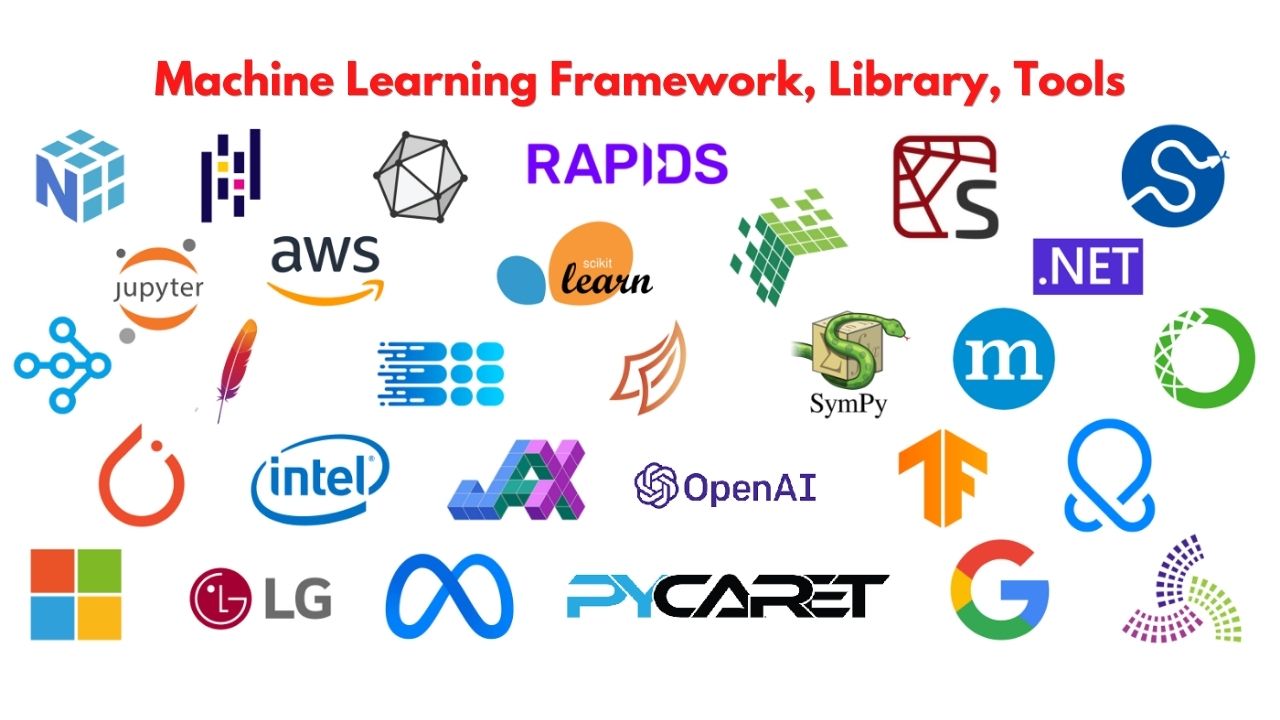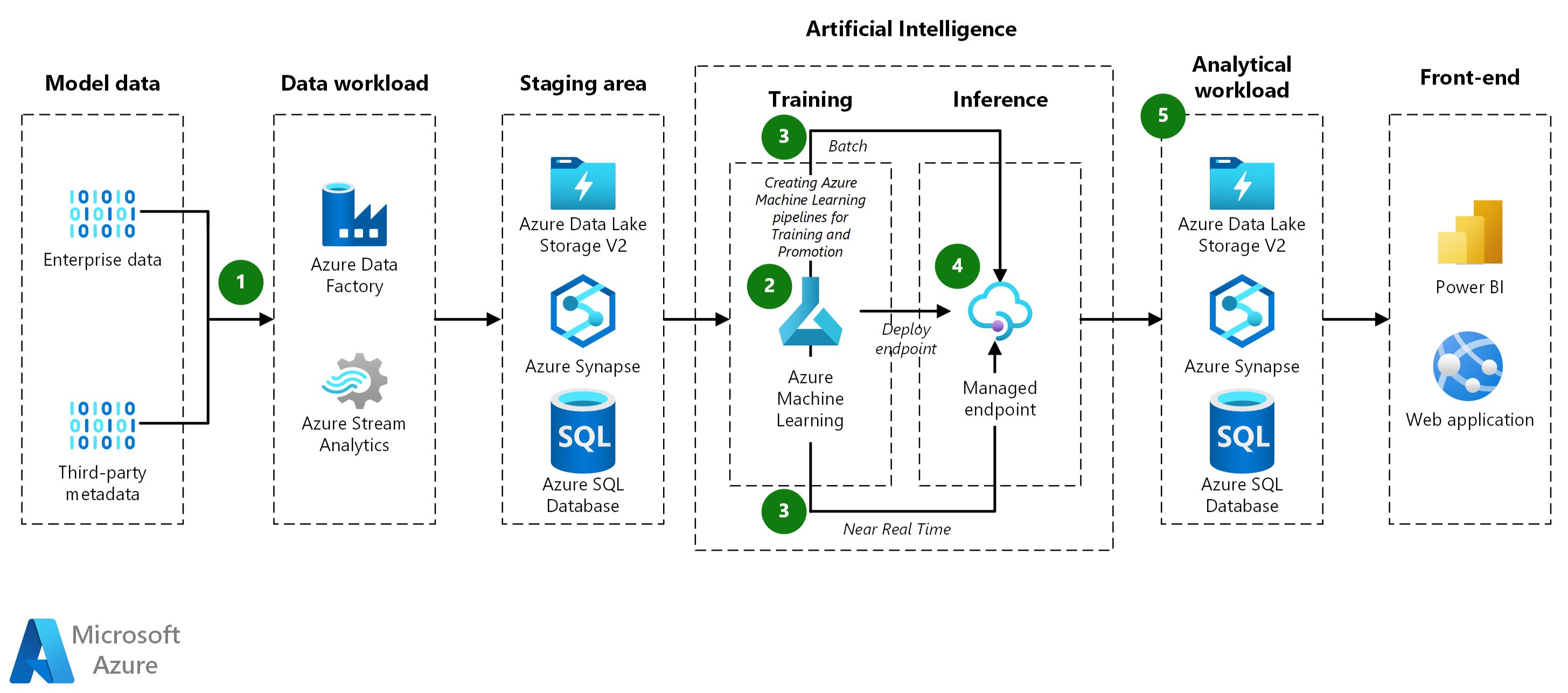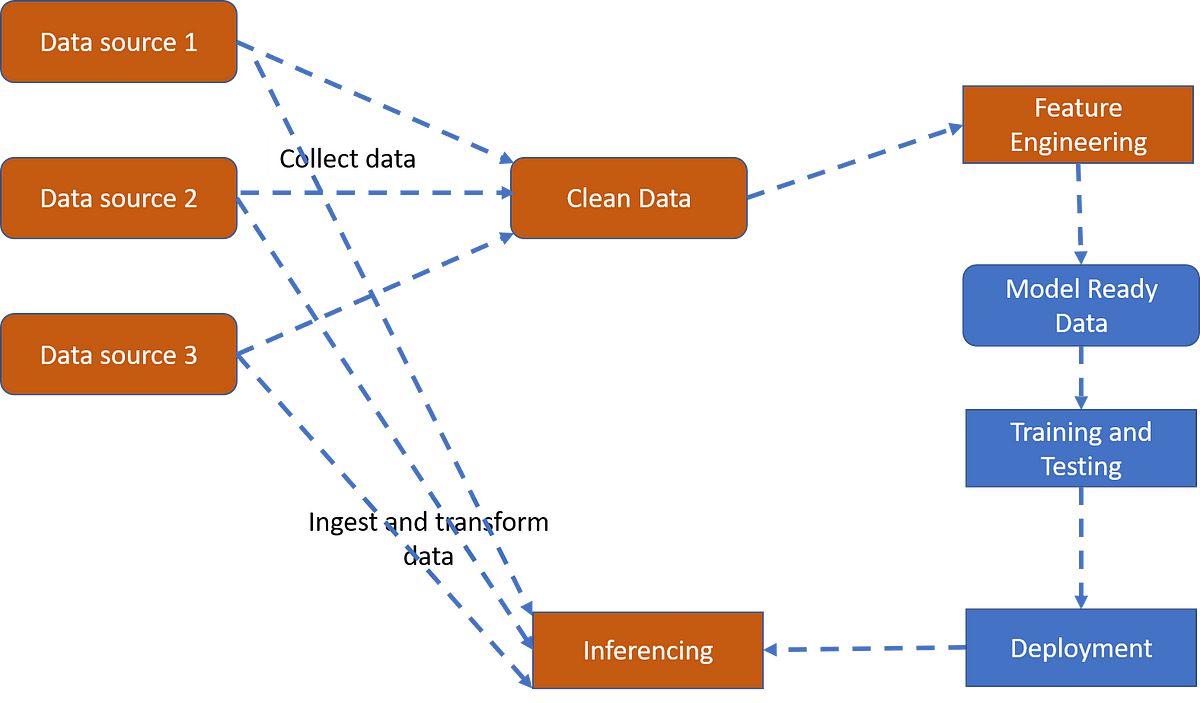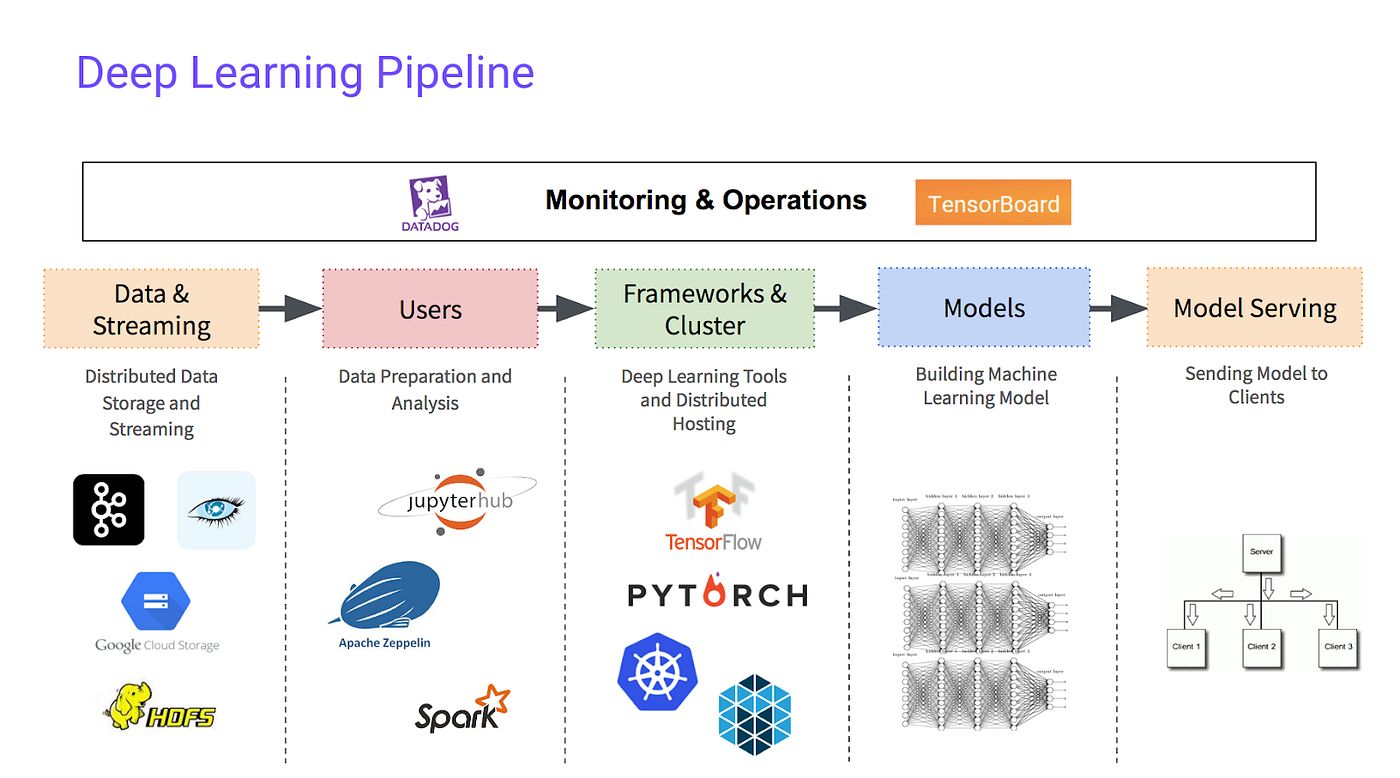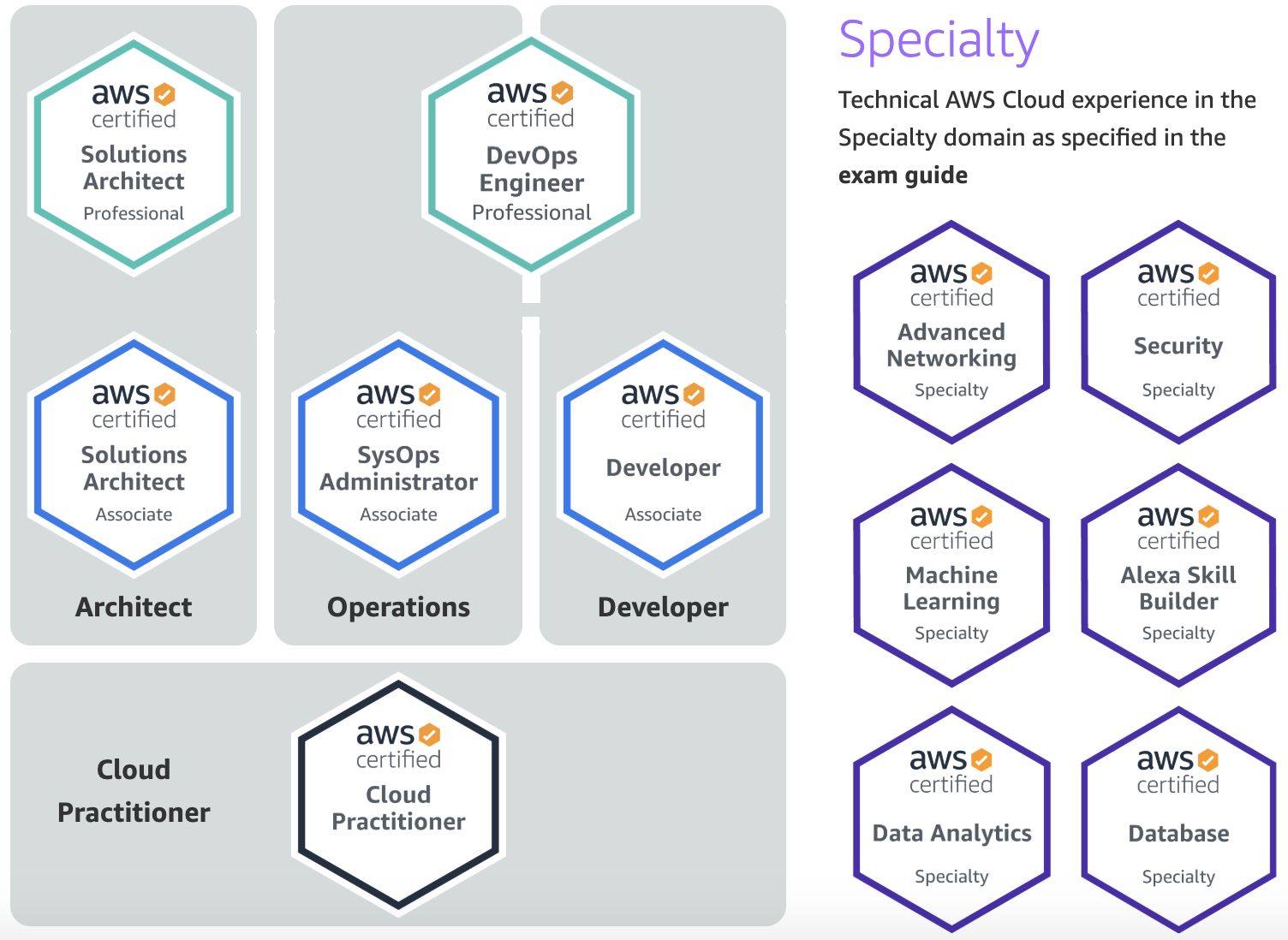Introduction
The field of machine learning has seen remarkable advancements in recent years and has become a crucial component in various industries. From healthcare to finance, machine learning algorithms have proven their ability to analyze vast amounts of data and make accurate predictions. However, to leverage the power of machine learning, one needs the right set of tools.
In this article, we explore the concept of machine learning tools and their significance in the development and deployment of machine learning models. We will also delve into popular machine learning tools that are widely used by data scientists and developers.
Machine learning, a subset of artificial intelligence, aims to enable computers to learn and improve from experience without explicit programming. Traditional programming involves providing specific instructions to solve a problem, while machine learning uses algorithms to analyze data and automatically learn patterns, make decisions, and improve performance over time.
Machine learning tools play a pivotal role in simplifying the complex process of building, training, and deploying machine learning models. These tools provide an environment where data scientists and developers can experiment with various algorithms, preprocess data, train models, and evaluate their performance.
The importance of machine learning tools cannot be overstated. They facilitate faster development of models, optimize resource usage, and allow for efficient deployment of machine learning applications. Moreover, they provide a range of features and functionalities, such as data visualization, data preprocessing, and model interpretation, which significantly aid in the machine learning pipeline.
The availability of popular machine learning libraries and frameworks has further accelerated the adoption of machine learning tools. These libraries offer a collection of pre-implemented algorithms and functions, making it easier for developers to apply machine learning techniques to their specific use cases.
In the following sections, we will discuss some of the most popular machine learning tools that have gained prominence in the industry. We will explore their key features, capabilities, and use cases. Whether you are a data scientist, a developer, or a business professional, understanding these tools will empower you to leverage the power of machine learning in your domain.
Definition of Machine Learning
Machine learning is a branch of artificial intelligence (AI) that focuses on developing algorithms and models that enable computers to learn and make accurate predictions without being explicitly programmed. This field aims to create systems that can automatically improve their performance through experience and data analysis.
At its core, machine learning involves training a model on a large dataset consisting of input and output pairs. The model then uses this training data to learn patterns and relationships, allowing it to make predictions or decisions on new, unseen data. The process of training involves adjusting the model’s parameters to minimize errors and improve its performance.
Machine learning algorithms can be broadly categorized into three types:
- Supervised Learning: In supervised learning, each training example is labeled with the correct output. The algorithm learns the mapping between inputs and corresponding outputs, allowing it to make predictions on new, unseen data.
- Unsupervised Learning: In unsupervised learning, there are no labeled outputs for the training data. The algorithm explores the data to discover underlying patterns or groupings without any specific guidance.
- Reinforcement Learning: In reinforcement learning, an agent learns to interact with an environment and receives rewards or penalties based on its actions. The agent then adjusts its behavior to maximize the rewards, leading to the development of optimal strategies.
Machine learning has numerous applications across various domains. It is used in image and speech recognition, natural language processing, recommendation systems, fraud detection, sentiment analysis, and many other areas. The potential of machine learning to extract insights and make accurate predictions from vast amounts of data has made it an indispensable tool in industries such as healthcare, finance, marketing, and manufacturing.
It is important to note that machine learning is not a magic solution to every problem. It requires careful consideration of the data, algorithm selection, model training, evaluation, and iterative refinement to produce meaningful results. Additionally, the quality and quantity of training data, feature engineering, model selection, and tuning are crucial factors that impact the performance of a machine learning system.
In the next sections, we will explore various machine learning tools that simplify the process of developing and deploying machine learning models. These tools provide the necessary features and capabilities to handle challenging machine learning tasks effectively, empowering data scientists and developers to unlock the true potential of machine learning in their projects.
What Is a Machine Learning Tool?
A machine learning tool is a software or platform that provides an environment for data scientists, developers, and researchers to build, train, and deploy machine learning models. These tools offer a range of functionalities and features that streamline the entire machine learning workflow, from data preprocessing to model evaluation.
Machine learning tools are designed to simplify the complex processes involved in machine learning, allowing users to focus more on the development and experimentation rather than dealing with low-level implementation details. They provide a user-friendly interface, programming libraries, and pre-implemented algorithms, making it easier to apply machine learning techniques to various datasets and problems.
One of the primary functions of machine learning tools is data preprocessing. This involves cleaning and transforming raw data into a format suitable for training a machine learning model. These tools provide functionalities for handling missing values, outlier detection, feature scaling, and data normalization, which are essential steps in preparing the data for model training.
In addition to data preprocessing, machine learning tools offer a wide range of algorithms and models that can be applied to different types of problems. These tools often include popular machine learning libraries and frameworks, such as TensorFlow, Scikit-learn, PyTorch, and Keras, which provide a vast collection of pre-implemented algorithms and advanced functionalities.
Furthermore, machine learning tools assist in model selection and evaluation. They offer metrics and techniques to assess the performance of trained models, allowing users to compare different algorithms and make informed decisions. Features like cross-validation, hyperparameter tuning, and model interpretation aid in fine-tuning the model’s performance and understanding its behavior.
Another crucial aspect of machine learning tools is their ability to facilitate model deployment and integration. These tools provide functionalities to export trained models, make predictions on new data, and integrate the models into existing applications or systems. This ensures that the models can be utilized in real-world scenarios, providing valuable insights and automating decision-making processes.
Machine learning tools also play a significant role in collaboration and knowledge sharing among data scientists and developers. Many tools provide features for version control, project management, and sharing of experiments and code, enabling teams to work together efficiently and leverage each other’s expertise.
Overall, machine learning tools simplify and accelerate the development and deployment of machine learning models. They provide a comprehensive ecosystem where users can explore and experiment with different techniques, algorithms, and datasets, enabling them to drive innovation and solve complex problems using the power of machine learning.
Importance of Machine Learning Tools
Machine learning tools play a crucial role in the development and implementation of machine learning models, offering a wide range of benefits and advantages. Let’s explore the importance of these tools in empowering data scientists, developers, and businesses to leverage the power of machine learning.
1. Streamlined Development Process: Machine learning tools provide a streamlined and efficient workflow, simplifying the development process for data scientists and developers. These tools offer user-friendly interfaces, drag-and-drop functionalities, and automated processes to handle the complexities of data preprocessing, feature engineering, model training, and evaluation.
2. Rapid Prototyping and Experimentation: Machine learning tools enable rapid prototyping and experimentation. They provide an environment where users can quickly iterate on ideas, try different algorithms, and evaluate their performance. This accelerates the development process, enabling data scientists to test hypotheses and refine models faster.
3. Advanced Algorithms and Models: Machine learning tools incorporate advanced algorithms and models, allowing users to apply state-of-the-art techniques without the need for extensive coding. These tools often integrate popular machine learning libraries and frameworks, providing access to a wide range of pre-implemented algorithms and models that can be readily used in various domains and applications.
4. Automation and Efficiency: Machine learning tools automate many complex processes, reducing the manual effort required in developing, training, and deploying machine learning models. These tools handle tasks like hyperparameter tuning, cross-validation, model selection, and deployment, freeing up time for data scientists and developers to focus on higher-level tasks and strategic decision-making.
5. Model Interpretability: Many machine learning tools offer features and techniques for model interpretability. These tools help users understand how a model arrives at its predictions, providing insights into the decision-making process. Model interpretability is crucial, especially in domains where transparency and explainability are essential, such as healthcare, finance, and legal applications.
6. Collaboration and Knowledge Sharing: Machine learning tools facilitate collaboration and knowledge sharing among data scientists and developers. They provide features for version control, project management, and sharing of experiments and code, enabling teams to work together seamlessly and leverage collective expertise. This fosters collaboration, innovation, and fosters a culture of learning.
7. Scalability and Deployment: Machine learning tools aid in scaling and deploying machine learning models in real-world applications. They provide functionalities to deploy models on cloud platforms, edge devices, or within existing systems, ensuring scalability and accessibility. These tools also offer integration with other software and technologies, enabling seamless deployment and integration processes.
By leveraging machine learning tools, organizations can unlock the potential of their data, make data-driven decisions, and gain a competitive advantage in today’s data-driven world. These tools empower businesses to extract actionable insights, automate processes, improve customer experiences, and optimize operations.
In the next section, we will explore some of the popular machine learning tools used by data scientists and developers in the industry.
Popular Machine Learning Tools
Machine learning tools provide a wide range of features and functionalities to simplify the development and implementation of machine learning models. Let’s explore some of the popular machine learning tools that are widely used by data scientists and developers:
1. TensorFlow
Developed by Google, TensorFlow is an open-source machine learning library widely used in both research and industrial applications. It offers a comprehensive ecosystem that supports building and training machine learning models across a variety of platforms, including CPUs, GPUs, and mobile devices. TensorFlow provides high-level APIs for easy model building and low-level components for advanced customization. It supports deep learning models and offers additional functionalities for distributed computing and deployment in production environments.
2. Scikit-learn
Scikit-learn is a popular Python library that provides a wide array of pre-implemented algorithms and tools for machine learning tasks. It offers a simple and intuitive API, making it easy to use for both beginners and experienced users. Scikit-learn supports various supervised and unsupervised learning algorithms, including classification, regression, clustering, dimensionality reduction, and model evaluation. It also provides utilities for data preprocessing, feature selection, and model selection, making it a versatile tool for a wide range of machine learning applications.
3. PyTorch
PyTorch is an open-source machine learning framework developed by Facebook’s AI Research lab. It offers a dynamic computational graph that allows for efficient model building and training. PyTorch embraces a “define-by-run” approach, enabling developers to create models using imperative programming. It supports deep learning models and provides a range of tools and utilities for tasks such as data loading, optimization, and model deployment. PyTorch’s flexible design and strong community support have made it a popular choice for both researchers and practitioners.
4. Keras
Keras is a high-level neural network API that is built on top of TensorFlow. It provides a user-friendly interface and a simplified API for building and training deep learning models. Keras allows for rapid prototyping and experimentation, supporting a wide range of neural network architectures and layer types. It includes pre-trained models and provides easy integration with other frameworks. Keras’s simplicity, versatility, and extensibility have made it one of the most popular choices for deep learning practitioners.
5. Microsoft Azure Machine Learning Studio
Microsoft Azure Machine Learning Studio is a cloud-based platform that offers a drag-and-drop interface for building, training, and deploying machine learning models. It provides a vast collection of pre-built modules and algorithms that can be easily connected to create complex workflows. Azure Machine Learning Studio supports various machine learning tasks, including regression, classification, clustering, and anomaly detection. It also offers capabilities for data preprocessing, visualization, and model evaluation. With its seamless integration into the Azure ecosystem, this tool provides scalability, collaboration, and deployment options for machine learning projects.
These are just a few examples of the many machine learning tools available today. Each tool has its own unique features and strengths, catering to different needs and preferences. The choice of the tool depends on factors such as project requirements, expertise, and specific use cases. By leveraging these popular machine learning tools, data scientists and developers can effectively tackle complex problems, leverage advanced algorithms, and harness the power of machine learning in their projects.
TensorFlow
TensorFlow is an open-source machine learning library developed by Google. It has gained significant popularity and has become one of the most widely used tools for building and training machine learning models. TensorFlow provides a comprehensive ecosystem that supports the development of machine learning models across various platforms, including CPUs, GPUs, and mobile devices.
One of the key features of TensorFlow is its flexibility and scalability. It supports building and training both traditional machine learning models and deep learning models. TensorFlow’s core capabilities are centered around defining and executing computational graphs, which allow for efficient parallel computations. This makes TensorFlow well-suited for large-scale machine learning tasks and distributed training.
TensorFlow offers high-level APIs, such as Keras, which simplify the process of model building and training. Keras provides a user-friendly and intuitive interface for constructing neural network architectures. It allows for rapid prototyping and experimentation, making it easier to iterate on ideas and explore different model architectures.
In addition to its high-level APIs, TensorFlow also provides low-level components that allow for fine-grained model customization. These low-level components enable users to define and manipulate tensors, design custom operations, and optimize the performance of their models. This flexibility is particularly beneficial for researchers and advanced users who require more control over the finer details of their models.
TensorFlow’s extensive library of pre-implemented machine learning algorithms and models is another significant advantage. It provides a wide range of algorithms for classification, regression, clustering, and more. This vast collection of pre-built models allows developers to leverage existing implementations, saving time and effort in model development.
Furthermore, TensorFlow has a strong and active community that contributes to its continuous development and improvement. The community provides support through forums, documentation, tutorials, and open-source projects, making it easier for users to get up to speed and resolve any challenges they may encounter.
TensorFlow’s integration with other tools and frameworks is also worth mentioning. It can be seamlessly combined with popular data processing libraries like Pandas and NumPy, enabling efficient data manipulation and preprocessing. TensorFlow can also be integrated with other deep learning libraries, such as Keras, to leverage their combined strengths and capabilities.
Additionally, TensorFlow supports deployment of trained models to various platforms, including mobile devices and embedded systems, through technologies like TensorFlow Lite. This allows for the integration of machine learning models in real-world applications, making predictions and inferences on edge devices.
In summary, TensorFlow is a powerful and versatile machine learning tool. Its flexibility, scalability, support for both traditional and deep learning models, extensive library of pre-implemented algorithms, and active community make it a preferred choice for many data scientists and developers. By leveraging TensorFlow, users can tackle complex machine learning tasks, achieve high-performance models, and unlock the potential of their data.
Scikit-learn
Scikit-learn is a widely used open-source machine learning library in Python. It offers a comprehensive suite of tools and algorithms for traditional machine learning tasks, making it a popular choice among data scientists and researchers. Scikit-learn provides a simple and intuitive API, making it accessible to both beginners and experienced developers.
One of the key features of Scikit-learn is its extensive collection of pre-implemented algorithms. It covers a wide range of machine learning tasks, including classification, regression, clustering, dimensionality reduction, and model selection. These algorithms are efficiently implemented and well-documented, allowing users to quickly apply them to their specific use cases.
The simplicity and consistency of Scikit-learn’s API make it easy to learn and use. The library follows a uniform interface for different algorithms, allowing users to switch between models seamlessly. This not only simplifies the code writing process, but also streamlines the experimentation and evaluation of different algorithms.
In addition to its vast array of algorithms, Scikit-learn also provides a range of tools for data preprocessing and feature engineering. It offers functionalities for handling missing values, feature scaling, data normalization, dimensionality reduction, and more. These preprocessing tools facilitate the cleaning and transformation of data, ensuring that it is suitable for training machine learning models.
Scikit-learn also supports various model evaluation techniques, such as cross-validation and performance metrics. These tools enable users to assess the performance of their models, compare different algorithms, and fine-tune their models for optimal results. The library also provides utilities for hyperparameter tuning, allowing users to search for the best set of parameters to improve their model’s performance.
Another advantage of Scikit-learn is its compatibility with other Python libraries, such as NumPy and Pandas. This allows for seamless integration and data exchange between different libraries, enabling efficient data manipulation, preprocessing, and analysis.
Scikit-learn’s strong community support is another noteworthy aspect. The library is actively maintained and regularly updated to incorporate the latest advancements in machine learning research. The community offers extensive documentation, tutorials, and example code, making it easier for users to get started and navigate through the library’s functionalities.
Furthermore, Scikit-learn promotes reproducible machine learning experiments. It provides tools for model serialization and persistence, allowing users to save trained models and load them for later use. This ensures that experiments are reproducible and models can be easily deployed in production environments.
In summary, Scikit-learn is a reliable and popular machine learning library. Its extensive collection of pre-implemented algorithms, intuitive API, tools for data preprocessing and model evaluation, compatibility with other Python libraries, and strong community support contribute to its widespread adoption. By utilizing Scikit-learn, data scientists and developers can efficiently develop accurate machine learning models and gain insights from their data.
PyTorch
PyTorch is a popular open-source machine learning framework developed by Facebook’s AI Research lab. It is known for its dynamic computational graph and flexibility, making it a preferred choice for researchers and developers in the deep learning field. PyTorch provides a powerful platform for building, training, and deploying machine learning models.
One of the key features of PyTorch is its dynamic computational graph, which allows for more flexible and intuitive model development. Unlike static computational graphs in other frameworks, PyTorch enables developers to define and modify the graph on-the-fly during runtime. This makes it easier to experiment with different architectures, modify models, and incorporate complex and conditional operations.
PyTorch’s “define-by-run” approach, which enables models to be defined using imperative programming, offers a more intuitive interface for developers. This flexibility allows for rapid prototyping and experimentation, making it easier to test new ideas and algorithms. It also simplifies the debugging process by providing a more natural flow for code execution and error tracking.
Another advantage of PyTorch is its seamless integration with Python. It leverages the full power of Python’s scientific computing libraries, such as NumPy and Pandas, for efficient data manipulation and preprocessing. This integration enables a smooth transition between data preprocessing, model development, and result analysis within a single Python ecosystem.
PyTorch supports both traditional machine learning and deep learning models. It provides a comprehensive set of tools and utilities for building and training neural networks. PyTorch’s neural network modules allow for easy construction of complex architectures, with support for various layers, activation functions, loss functions, and optimization algorithms. It also offers pre-trained models and transfer learning capabilities, allowing users to leverage pre-trained models for different tasks and domains.
Additionally, PyTorch provides a rich set of utilities for model training, evaluation, and deployment. It includes data loading modules for efficient handling of large datasets, GPU acceleration for faster computations, and built-in tools for model checkpointing and visualization. PyTorch’s integration with other frameworks, such as ONNX (Open Neural Network Exchange), enables seamless exporting and deployment of trained models on different platforms and environments.
PyTorch has a growing and active community, which contributes to its continuous development and improvement. The community provides extensive documentation, tutorials, and example code, making it easier for users to learn and utilize PyTorch’s capabilities. The framework also benefits from numerous research contributions and advancements made by the community, ensuring that it stays at the forefront of the deep learning field.
In summary, PyTorch stands out for its dynamic computational graph, ease of use, seamless Python integration, and strong community support. Its flexibility and intuitive interface make it an ideal choice for researchers and developers working on deep learning projects. By leveraging PyTorch, users can efficiently develop and train complex neural network models, and bridge the gap between research and practical deployment of machine learning solutions.
Keras
Keras is a high-level neural network API that is built on top of TensorFlow, an open-source machine learning library. It provides a user-friendly and intuitive interface for building, training, and deploying deep learning models. Keras has gained immense popularity due to its simplicity, versatility, and extensibility.
One of the key features of Keras is its ease of use. It offers a simple and intuitive API that allows users to quickly define and train deep learning models. Keras provides a high-level abstraction, enabling users to focus on the architecture and design of their models rather than the low-level implementation details. This makes it a popular choice for both beginners in deep learning and experienced researchers and developers.
Keras supports a variety of neural network architectures, including convolutional neural networks (CNNs), recurrent neural networks (RNNs), and transformer models. It also provides a wide range of pre-defined layers, activation functions, and loss functions. This enables users to easily construct complex network architectures by simply stacking and configuring the desired layers.
Furthermore, Keras promotes rapid prototyping and experimentation. It allows for quickly iterating on model designs and hyperparameters, providing immediate feedback on the performance and behavior of the model. This capability reduces development time and accelerates the exploration of different architectures and hyperparameter settings.
Keras also facilitates transfer learning, which is crucial in scenarios where limited labeled data is available. It offers pre-trained models that have already been trained on extensive datasets such as ImageNet. Developers can leverage these pre-trained models as a starting point and fine-tune them on their specific tasks, saving significant time and computational resources.
Keras seamlessly integrates with TensorFlow, allowing users to combine the strengths of both frameworks. TensorFlow serves as the backend for computation in Keras, providing scalability and access to advanced features and capabilities of TensorFlow. This integration enables users to leverage TensorFlow’s lower-level functionalities and apply complex operations or custom models within the Keras framework.
Moreover, Keras enjoys a large and active community that contributes to its continuous development. The community provides extensive documentation, tutorials, and example code, making it easier for users to get started and solve problems. This wealth of resources fosters collaboration and knowledge sharing among Keras users, enabling them to learn from each other and accelerate their model development and research.
Overall, Keras is a powerful and versatile API for deep learning. Its simplicity, versatility, and seamless integration with TensorFlow have made it a popular choice among researchers and developers. By utilizing Keras, users can rapidly prototype, experiment, and deploy deep learning models, driving advancements in various domains such as computer vision, natural language processing, and more.
Microsoft Azure Machine Learning Studio
Microsoft Azure Machine Learning Studio is a cloud-based platform that offers a user-friendly interface for building, training, and deploying machine learning models. It provides a range of tools and functionalities that simplify the end-to-end machine learning workflow, making it accessible to data scientists, developers, and business professionals.
One of the key advantages of Azure Machine Learning Studio is its drag-and-drop interface. It allows users to build machine learning models using a visual interface, eliminating the need for extensive coding and programming knowledge. This feature makes it accessible to users with varying levels of technical expertise, enabling collaboration across teams and departments.
Azure Machine Learning Studio provides a vast collection of pre-built modules and algorithms that users can easily connect to create complex machine learning workflows. These modules cover a wide range of tasks, including data preprocessing, feature extraction, model training, and evaluation. Users can simply drag and drop these modules onto the workspace and connect them using a visual interface to create sophisticated machine learning pipelines.
The platform supports various machine learning algorithms, including classification, regression, clustering, and anomaly detection. It allows users to train and test their models using different data splitting techniques, such as cross-validation. Azure Machine Learning Studio also includes rich visualization capabilities to help users understand and interpret their models’ results more effectively.
Integration with other Azure services is another advantage of Azure Machine Learning Studio. Users can seamlessly connect their machine learning models to other Azure services, such as Azure Databricks for advanced data processing and analysis, Azure Data Lake Storage for scalable data storage, and Azure Kubernetes Service for deploying models in production environments. This integration enables users to leverage the full potential of Azure’s ecosystem and harness additional features and capabilities.
Azure Machine Learning Studio provides options for both cloud-based and local deployment. Users can choose to deploy their trained models to the cloud, making them accessible via web services, APIs, or batch processing. Alternatively, they can export their models for deployment on edge devices or other platforms, allowing for efficient and real-time inference close to the data source.
Another compelling aspect of Azure Machine Learning Studio is its collaboration and sharing capabilities. It enables teams to work together on projects, share experiments and workflows, and collaborate on model development and evaluation. This fosters knowledge sharing, reproducibility, and efficient teamwork.
Azure Machine Learning Studio offers robust security and compliance features built on the Azure platform. It provides data encryption, user access controls, and compliance with industry standards and regulations, ensuring the privacy and protection of sensitive data.
In summary, Microsoft Azure Machine Learning Studio is a powerful cloud-based platform that provides a visual interface for building, training, and deploying machine learning models. Its drag-and-drop capabilities, rich collection of pre-built modules, integration with Azure services, deployment flexibility, collaboration features, and security measures make it an attractive choice for businesses looking to leverage machine learning technologies without extensive coding and infrastructure setup.
Considerations when Choosing a Machine Learning Tool
When selecting a machine learning tool, it is important to consider various factors that align with your specific needs and requirements. Here are some key considerations to keep in mind:
1. Ease of Use: Consider the user-friendliness and ease of use of the tool. Is the interface intuitive? Does it provide a simple and straightforward way to develop, train, and deploy machine learning models? An easy-to-use tool can streamline your workflow and speed up the development process.
2. Flexibility and Customization: Assess the tool’s flexibility and customization options. Can you easily modify and tailor the models and algorithms to suit your specific use cases? A tool that allows for customization enables you to address unique challenges and fine-tune models for optimal performance.
3. Algorithm Availability: Determine the availability of the algorithms and models within the tool. Does the tool offer a comprehensive set of algorithms for your specific use cases? Having a wide range of pre-implemented algorithms can save time and effort in implementing complex models from scratch.
4. Scalability: Consider the scalability of the tool. Can it handle large datasets and efficiently train models on distributed computing resources? Scalability is crucial when dealing with big data and when you expect your models to handle increasing workloads.
5. Integration: Evaluate the tool’s integration capabilities with other frameworks, libraries, and platforms. Does it easily integrate with your existing data infrastructure? Integration with other tools allows for efficient data preprocessing, utilization of external libraries, and seamless deployment of models in production environments.
6. Performance and Optimization: Assess the performance and optimization features of the tool. Does it provide tools for hyperparameter tuning, performance monitoring, and model optimization? These features can help improve the accuracy, efficiency, and resource utilization of your models.
7. Community and Support: Consider the size and activity of the tool’s community. Does the tool have an active community that provides support, documentation, and regular updates? A strong community can provide valuable insights, resources, and troubleshooting assistance, ensuring a smooth user experience.
8. Security and Compliance: Evaluate the tool’s security and compliance measures. Does it provide features for data encryption, user access controls, and compliance with industry regulations? Security and compliance are critical, especially when dealing with sensitive data in regulated industries.
9. Cost and Licensing: Consider the cost and licensing model of the tool. Does it align with your budget and usage requirements? Some tools may offer free or open-source versions, while others might have subscription-based pricing models. It is important to understand the financial implications of using the tool.
10. Future-proofing: Finally, consider the tool’s roadmap and future developments. Is the tool actively maintained and continuously updated? Machine learning is a rapidly evolving field, and a tool that is regularly updated ensures that you can benefit from the latest advancements and stay ahead of the curve.
By considering these factors, you can make an informed decision when choosing a machine learning tool that best suits your needs, maximizes productivity, and enables you to unleash the full potential of machine learning in your projects.
Conclusion
Machine learning tools are essential components in the development and deployment of machine learning models. They simplify the complex processes involved in data preprocessing, model training, and evaluation, allowing users to focus on solving their specific business problems. Popular machine learning tools such as TensorFlow, Scikit-learn, PyTorch, Keras, and Microsoft Azure Machine Learning Studio offer a range of features and functionalities to cater to diverse needs and requirements.
When choosing a machine learning tool, it is important to consider factors such as ease of use, flexibility, algorithm availability, scalability, integration capabilities, performance optimization, community support, security, compliance, and cost. These considerations ensure that the selected tool aligns with your specific use cases and provides the necessary features to drive the success of your machine learning projects.
Whether you are a data scientist, developer, or business professional, the right machine learning tool empowers you to unlock the potential of your data, make data-driven decisions, automate processes, optimize operations, and gain a competitive advantage in today’s data-driven world.
Machine learning continues to evolve rapidly, and staying up-to-date with the latest advancements and developments in machine learning tools is crucial. By leveraging the power of these tools, you can harness the capabilities of machine learning to extract valuable insights, make accurate predictions, and drive innovation across various industries and domains.
Ultimately, the choice of a machine learning tool depends on your unique requirements, expertise, and project goals. So, explore and experiment with different tools, learn from the community, and leverage the strengths of these tools to unlock the full potential of machine learning in your projects.







